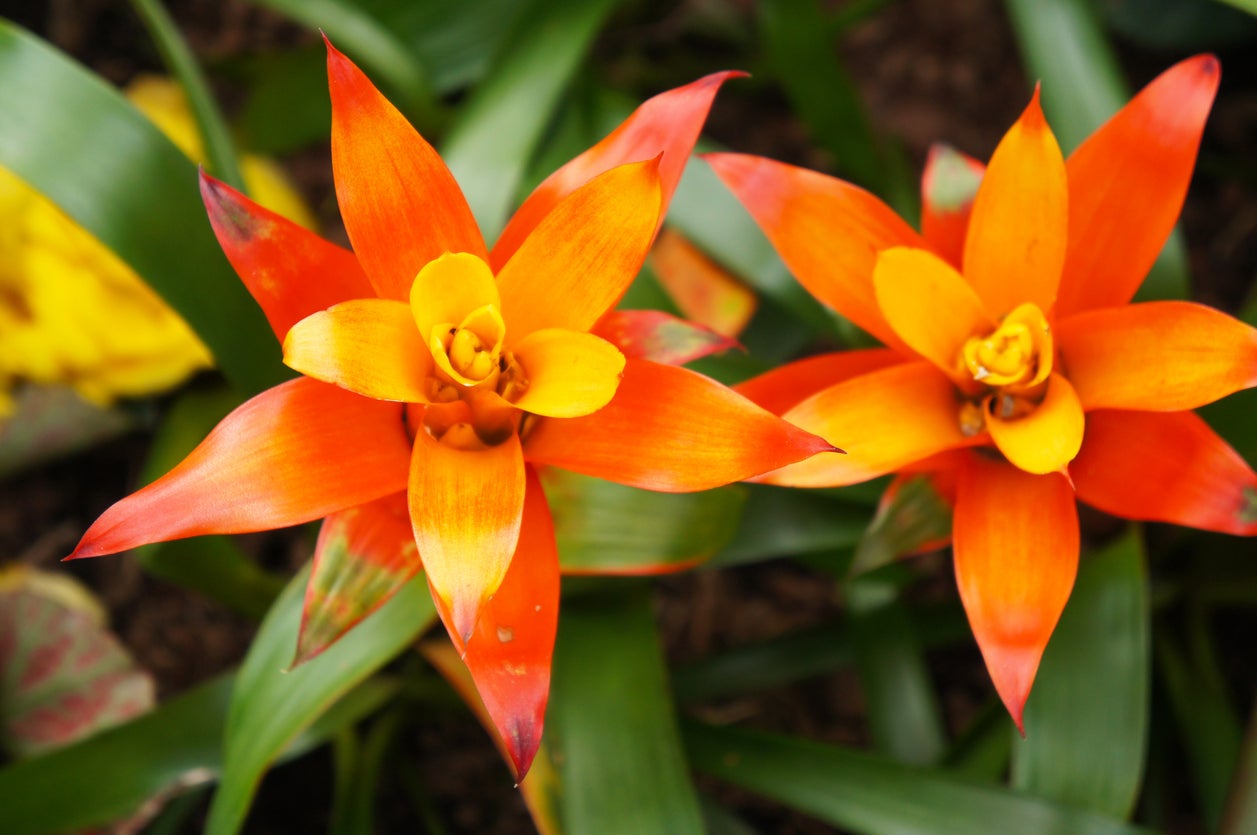Bromeliad Plant Problems: Common Problems With Bromeliads


One of the more fascinating plant forms are the bromeliads. Their rosette arranged foliage and brightly colored blooms make for a unique and easy houseplant. They are relatively easy to grow with low maintenance needs, but there are a few common bromeliad issues. Although problems with bromeliads aren’t usual, they do occur, especially when grown outdoors in warm regions. A few tips on the most frequent issues and their cures can help your plant feel better in no time.
What’s Wrong with My Bromeliad?
Bromeliads are extremely resilient plants. Their cultural requirements are very simple, few pests bother them, and they thrive in indoor light. Bromeliad plant problems usually start with water. Too much or too little can affect the health of the plant and promote disease. We'll go over the three most common bromeliad plant issues.
Water Related Problems
Watering is a very important part of bromeliad care. Too little and the plant dries out, too much and they are prone to stem rot. Stem rot is probably the most common problem with bromeliads. They are also prone to several other fungal issues.
- Besides root and crown rot, Pythium causes wilting, blanching, and eventually dark, mushy roots.
- Rust disease produces brownish welts filled with liquid on the undersides of leaves.
- Helminthosporium leaf spot results in yellowish blisters that become dark and sunken as they age.
Good care and avoiding insect or mechanical injury can prevent most fungal issues.
Pest Related Bromeliad Plant Problems
If plants are sited correctly and are receiving good care, you may wonder, “What’s wrong with my bromeliad?”. If you are growing outdoors or you brought a plant inside, you could have an insect infestation.
- Aphids are soft-bodied insects that suck plant juices and causes stippling of the leaves.
- Mealybugs will leave a cottony substance, usually at the base of leaves.
- Scale are soft or hard bodied insects that often appear to have an armor.
Any of these can be treated by wiping the leaves with a cotton ball soaked in alcohol. Horticultural soap sprays or neem oil are also effective, as is rinsing off the plant.
Cultural Issues
Plants in full sun will dry out too quickly. While bromeliads don't like boggy soil, they are native to rainforests and need adequate moisture. Another common problem with siting plants in full sun is sunburn. Leaf tips are affected first and will turn brown to black. Light brown spots will also appear on the leaves.
Gardening tips, videos, info and more delivered right to your inbox!
Sign up for the Gardening Know How newsletter today and receive a free copy of our e-book "How to Grow Delicious Tomatoes".
Bromeliads are very sensitive to copper. If using a fungicide, make sure it is copper-free. Tap water may contain minerals that can adversely affect the health of your plant. Consider using rain or distilled water. Keep the cup or vase of the rosette filled with water but flush it monthly to avoid the buildup of salts.
Soil should be allowed to dry out between watering. Use a potting mixture formulated for bromeliads that will not retain water.

Bonnie Grant is a professional landscaper with a Certification in Urban Gardening. She has been gardening and writing for 15 years. A former professional chef, she has a passion for edible landscaping.
-
 Never Plant Seedlings Until They Pass These 3 Simple Tests
Never Plant Seedlings Until They Pass These 3 Simple TestsDon't be over-eager to transplant seedlings into the garden before they are ready. These quick and easy checks will help ensure flourishing plants.
By Mary Ellen Ellis
-
 Grow ‘Karl Rosenfield’ Peony Plants For The Ultimate Frilly Border Beauties And Cut Flowers
Grow ‘Karl Rosenfield’ Peony Plants For The Ultimate Frilly Border Beauties And Cut FlowersFor frilly double magenta peony petals infused with a heady fragrance, grow ‘Karl Rosenfield’ peony plants. Here’s how to cultivate the ultimate plushy blooms
By Tonya Barnett